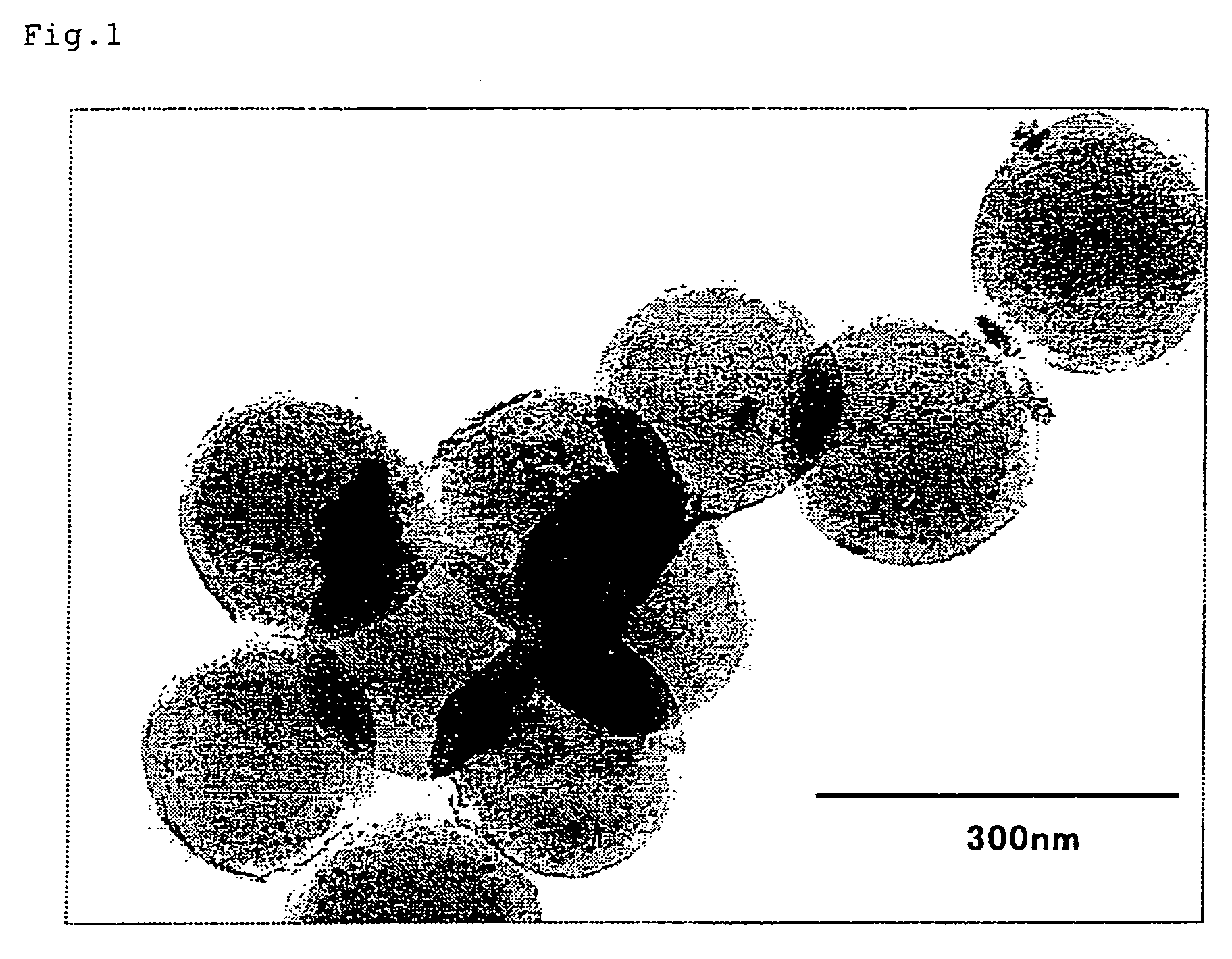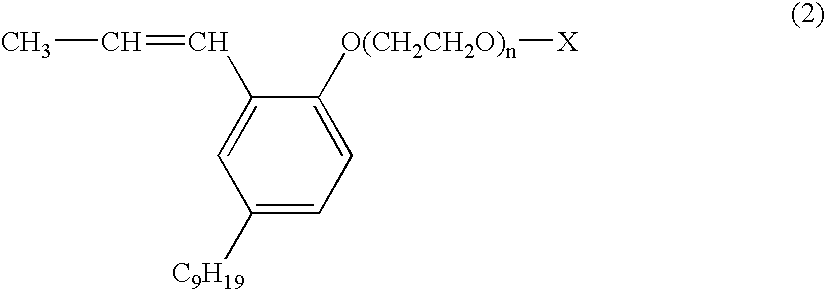Particle having magnetic material incorporated therein, process for producing the same, particle for immunoaasay and method of immunoassay
a magnetic material and particle technology, applied in the field of magnetic substance encapsulated particles, can solve the problems of wide particle size distribution of polymer particles, oxidation of magnetic substances, and exposure of magnetic substances at the surface, and achieve uniform magnetism and high dispersion stability
- Summary
- Abstract
- Description
- Claims
- Application Information
AI Technical Summary
Benefits of technology
Problems solved by technology
Method used
Image
Examples
examples 1 to 7
[0084] The respective monomers shown in Table 1 and 90 g of water were put into a two hundreds milliliter, four-necked flask. A stirring seal / a stirring rod, a reflux cooling tube and CERAM rubber were attached to the respective necks. This system was put in a thermostatic chamber of 70° C. and the inside of the system was replaced with nitrogen gas for 30 minutes while stirring the contents of the flask at a rotational speed of 200 rpm. Then, 0.06 g of KPS which is a polymerization initiator dissolved in water was dissolved in 10 g of water and the resulting solution was injected in the system with an injection cylinder. This time of injection was assumed to be the initiation time of polymerization, and a water solution of NH4OH (obtainable by dissolving 0.165 g of NH4OH in 5 g of water) was added to the mixture in the flask during polymerizing in order to attain adequate oxidizing power. And, after a lapse of two minutes from the initiation of polymerization, a water solution of F...
example 8
[0091] The respective monomers and water shown below were put into a two hundreds milliliter, four-necked flask. GMA / EGDM / AAm / H2O=2.835 / 0.015 / 0.15 / 90 (unit: g)
[0092] A stirring seal / a stirring rod, a reflux cooling tube and CERAM rubber were attached to the respective necks. This system was put in a thermostatic chamber of 70° C. and the inside of the system was replaced with nitrogen gas for 30 minutes while stirring the contents of the flask at a rotational speed of 200 rpm. Then, 0.06 g of KPS which is a polymerization initiator dissolved in water was dissolved in 10 g of water and the resulting solution was injected in the system with an injection cylinder. This time of injection was assumed to be the initiation time of polymerization, and a water solution of NH4OH (obtainable by dissolving 0.165 g of NH4OH in 5 g of water) was added to the mixture in the flask after a lapse of one minute from the initiation of polymerization in order to attain adequate oxidizing power. And, af...
example 9
[0094] Magnetic substance-encapsulated particles were obtained by following the same procedure as in Example 8 except for changing the addition timing of the following substances after the initiation of polymerization to the following specified time and changing the polymerizing time to 3 hours from the initiation of polymerization.
[0095] A water solution of NH4OH (obtaineble by dissolving 0.165 g of NH4OH in 5 g of water): after a lapse of 30 minutes from the initiation of polymerization
[0096] KPS (obtainable by dissolving 0.165 g of KPS in 5 g of water): after a lapse of 60 minutes from the initiation of polymerization
PUM
 Login to View More
Login to View More Abstract
Description
Claims
Application Information
 Login to View More
Login to View More - R&D
- Intellectual Property
- Life Sciences
- Materials
- Tech Scout
- Unparalleled Data Quality
- Higher Quality Content
- 60% Fewer Hallucinations
Browse by: Latest US Patents, China's latest patents, Technical Efficacy Thesaurus, Application Domain, Technology Topic, Popular Technical Reports.
© 2025 PatSnap. All rights reserved.Legal|Privacy policy|Modern Slavery Act Transparency Statement|Sitemap|About US| Contact US: help@patsnap.com



